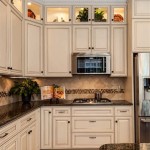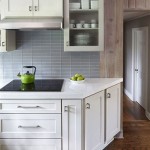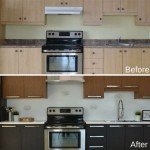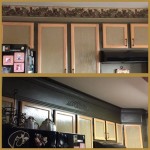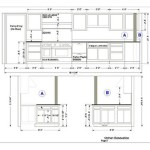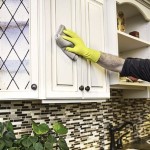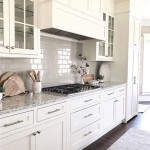The Durability and Appeal of Polyurethane Finish on Finnish Kitchen Cabinets
Finnish kitchen cabinets are renowned for their minimalist design, functionality, and quality craftsmanship. The clean lines, light wood tones, and emphasis on natural materials contribute to the enduring popularity of this style. However, the longevity and beauty of these cabinets depend significantly on the finish applied. Polyurethane has emerged as a favored choice for finishing Finnish kitchen cabinets due to its exceptional durability, protective qualities, and aesthetic versatility. This article explores the properties of polyurethane, its advantages for kitchen cabinets, and factors to consider when selecting this finish.
Polyurethane is a synthetic resin or plastic coating that forms a hard, durable, and protective layer when applied to wood surfaces. It is a polymer composed of organic units joined by carbamate (urethane) links. Polyurethane coatings are available in various formulations, including water-based and oil-based options, each offering unique characteristics and application properties. The chemical composition of polyurethane grants it resistance to abrasion, chemicals, moisture, and UV radiation, making it well-suited for the demanding environment of a kitchen.
The selection of a finish for kitchen cabinets is a critical decision that impacts both the aesthetic appeal and the long-term performance of the cabinetry. The kitchen environment exposes cabinets to various challenges, including humidity from cooking and cleaning, spills of food and liquids, and frequent handling. A durable finish is crucial to protect the wood from damage and maintain the cabinets' appearance.
Key Advantages of Polyurethane Finish for Finnish Kitchen Cabinets
Polyurethane offers several significant advantages for finishing Finnish kitchen cabinets, contributing to their durability, aesthetics, and longevity.
Enhanced Durability and Protection: Polyurethane forms a tough, resilient barrier on the wood surface, protecting it from scratches, dents, and abrasion. The finish's resistance to moisture is particularly important in kitchens, where humidity levels fluctuate significantly. Polyurethane helps prevent water damage, warping, and the development of mold or mildew. Its chemical resistance protects the wood from staining and damage caused by spills of common household products, such as cleaning solutions, oils, and acids. This robust protection ensures that the cabinets maintain their appearance for years, even with frequent use.
Aesthetic Versatility: Polyurethane finishes are available in a range of sheens, from matte to high-gloss, allowing homeowners to achieve the desired aesthetic for their kitchen. Matte finishes offer a subtle, natural look that complements the minimalist aesthetic of Finnish design. Gloss finishes, on the other hand, can enhance the vibrancy of the wood grain and create a more polished appearance. Polyurethane can also be tinted to achieve specific colors or shades, providing further customization options. The versatility of polyurethane allows it to be adapted to suit a wide range of kitchen styles and design preferences. Its ability to enhance the natural beauty of the wood while providing a protective barrier is a key factor in its popularity.
Easy Maintenance and Cleaning: Polyurethane-finished kitchen cabinets are relatively easy to maintain and clean. The smooth, non-porous surface of the finish prevents dirt and grime from penetrating the wood, making it easy to wipe clean with a damp cloth and mild detergent. Unlike some other finishes, polyurethane does not require special cleaning products or techniques. This ease of maintenance contributes to the long-term appeal of polyurethane-finished cabinets, as they can be kept looking their best with minimal effort. The durability of the finish also reduces the need for frequent refinishing or repairs, saving time and money in the long run.
The choice between water-based and oil-based polyurethane is a significant consideration. Each type has distinct characteristics that influence the application process, drying time, and final appearance of the finish.
Water-Based Polyurethane: Water-based polyurethane is known for its low odor and low volatile organic compound (VOC) content, making it a more environmentally friendly option. It dries quickly, reducing the overall finishing time. Water-based polyurethane typically has a clearer finish than oil-based options, which can enhance the natural color of the wood without adding an amber tint. However, water-based polyurethane may not be as durable or water-resistant as oil-based options, and it may require more coats to achieve the desired level of protection. The application process can also be more challenging, as water-based polyurethane tends to raise the grain of the wood, requiring sanding between coats.
Oil-Based Polyurethane: Oil-based polyurethane is known for its exceptional durability and water resistance. It provides a tough, long-lasting finish that can withstand heavy use and exposure to moisture. Oil-based polyurethane typically has an amber tint, which can add warmth and richness to the wood. However, this tint can also affect the appearance of lighter wood tones. Oil-based polyurethane has a strong odor and high VOC content, requiring proper ventilation during application. It also dries slowly, which can extend the finishing time. The application process is generally easier than with water-based polyurethane, as it does not tend to raise the grain of the wood as much.
The application of polyurethane finish to Finnish kitchen cabinets requires careful preparation and technique to ensure optimal results. Proper surface preparation is essential for achieving a smooth, even finish. This includes sanding the wood to create a smooth surface, removing any dust or debris, and applying a primer or sealer if necessary. The choice of applicator, whether a brush, roller, or sprayer, can also affect the final appearance of the finish. Brushes are best for applying polyurethane to intricate details or small areas, while rollers are more efficient for covering large surfaces. Sprayers provide the most consistent and even finish but require specialized equipment and skill.
Multiple coats of polyurethane are typically required to achieve the desired level of protection and durability. Each coat should be applied thinly and evenly, following the manufacturer's instructions. Sanding between coats is essential to remove any imperfections and create a smooth surface for the next coat to adhere to. The final coat should be applied with care to ensure a flawless finish. Proper drying time is also crucial, as insufficient drying can lead to tackiness or other imperfections.
Factors to Consider When Choosing a Polyurethane Finish
Selecting the right polyurethane finish requires careful consideration of several factors, including the type of wood, the desired aesthetic, and the level of durability required.
Type of Wood: The type of wood used in the Finnish kitchen cabinets can influence the choice of polyurethane finish. Lighter woods, such as birch or pine, may benefit from a water-based polyurethane to avoid the amber tint of oil-based options. Darker woods, such as walnut or cherry, can be enhanced by the warmth of oil-based polyurethane. The porosity of the wood also affects the application process and the number of coats required. More porous woods may require a sealer or primer to prevent the polyurethane from soaking into the wood and creating an uneven finish.
Desired Aesthetic: The desired aesthetic of the kitchen is another important consideration. Matte finishes create a subtle, natural look that complements the minimalist aesthetic of Finnish design. Gloss finishes add vibrancy and shine, creating a more polished appearance. The color of the polyurethane can also be customized to match the overall color scheme of the kitchen. It is important to consider how the finish will interact with the lighting in the kitchen and how it will complement other design elements, such as countertops and backsplashes.
Level of Durability: The level of durability required depends on the amount of use the kitchen cabinets will receive. High-traffic areas, such as cabinets near the sink or stove, may require a more durable finish, such as oil-based polyurethane. Cabinets in less-used areas may suffice with a water-based polyurethane. It is also important to consider the potential for spills and stains and choose a finish that is resistant to common household products. The long-term durability of the finish should be a primary consideration, as it will affect the overall lifespan of the cabinets.
In conclusion, polyurethane finish offers a compelling combination of durability, aesthetic versatility, and ease of maintenance, making it a popular choice for finishing Finnish kitchen cabinets. By carefully considering the type of wood, the desired aesthetic, and the level of durability required, homeowners can select the right polyurethane finish to enhance the beauty and longevity of their kitchen cabinetry. The careful application of polyurethane, with proper surface preparation and technique, ensures a flawless finish that protects the wood and maintains its appearance for years to come. The advantages of polyurethane, whether water-based or oil-based, are undeniable in the context of creating lasting and beautiful Finnish kitchen spaces.

Polyurethane Kitchens

Why Consider The Quality Finish Of Polyurethane For Kitchen Cabinets

The Best Finishes For Kitchen Cabinets Kitchens By Kathie

Choosing A Finish For Your Kitchen Cabinets Harrington Kitchens

Water Base Vs Oil Polyurethane Kitchen Cabinets Ehow

Explaining Our Beautiful Kitchen Cabinet Materials Montgomery Homes

Low Maintenance Why I Love Polyurethane Kitchens Harrington

What To Use Clean A Polyurethane Finish On Cabinets Hunker

Polyurethane Kitchens Sydney Order Custom
Polyurethane Vs Melamine Kitchen
Related Posts

